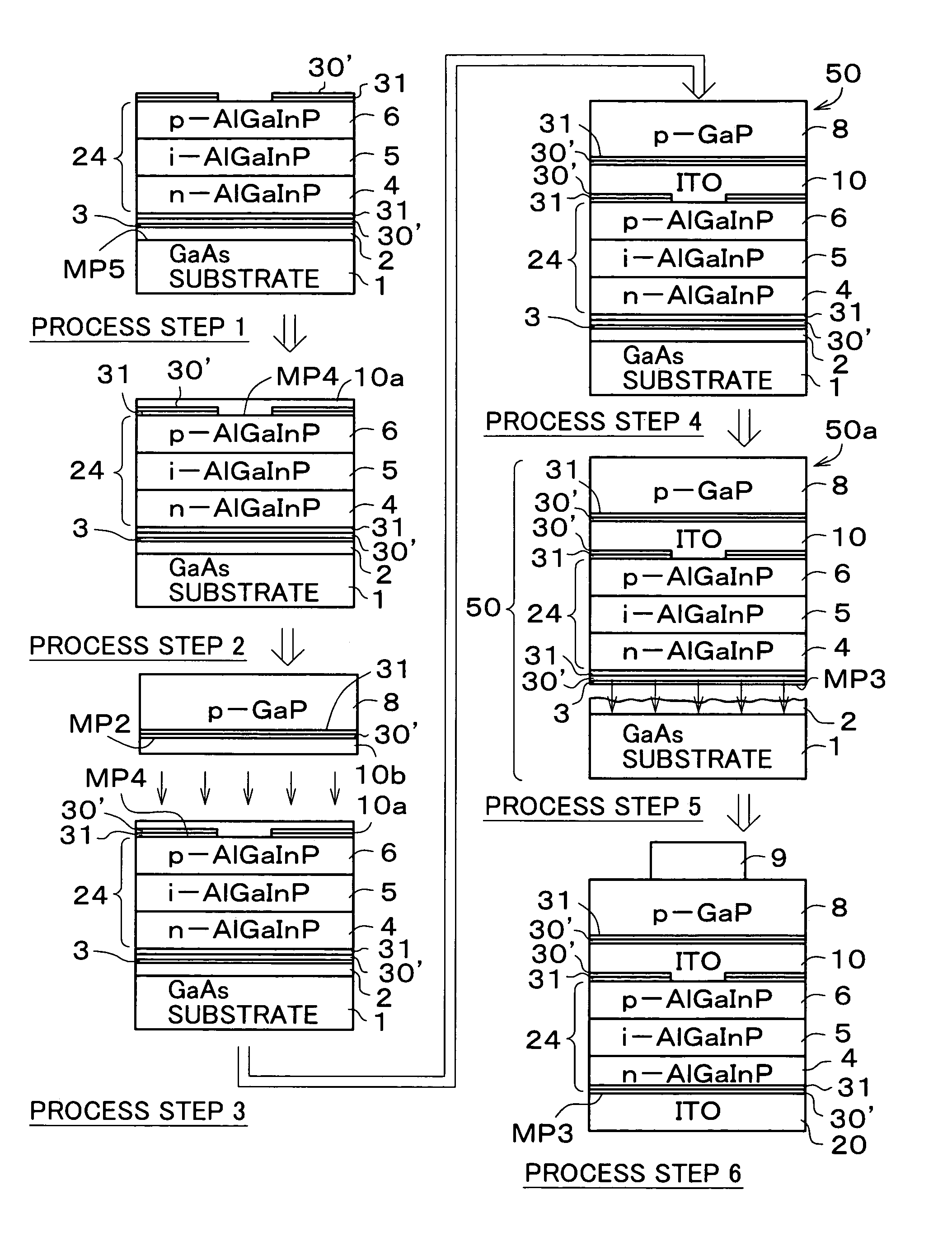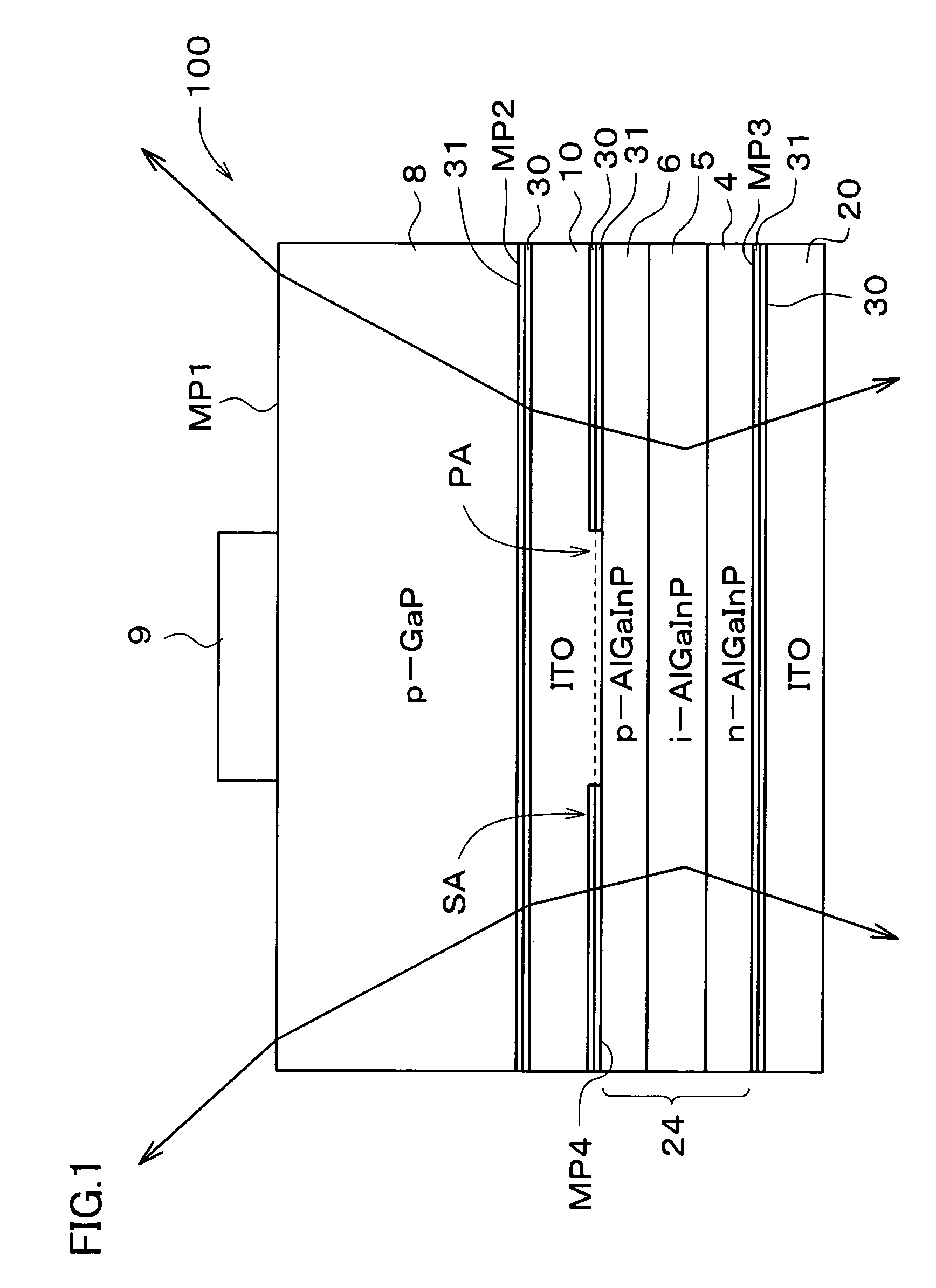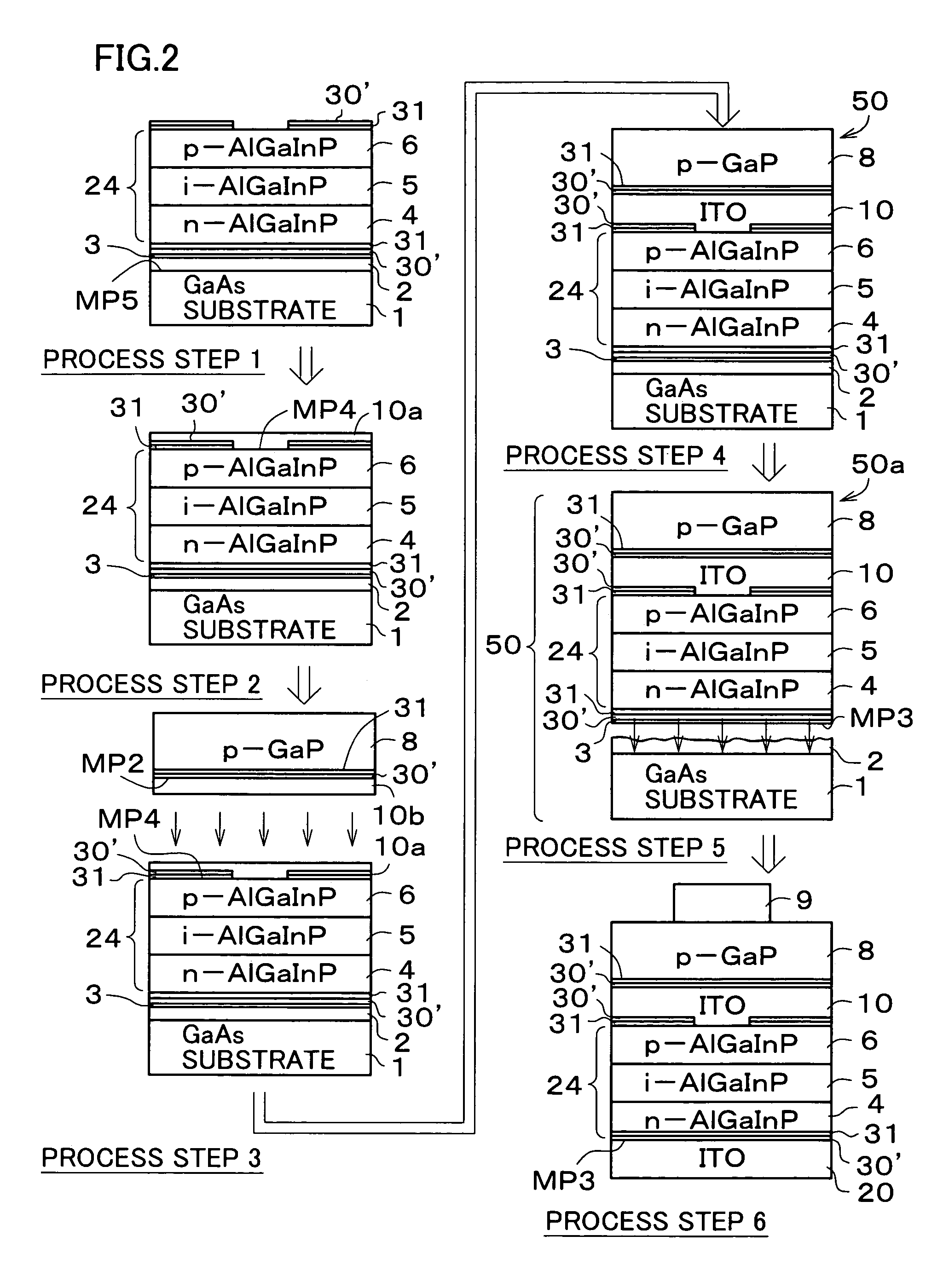Light-emitting device and method of fabricating the same
a technology of light-emitting devices and light-emitting surfaces, which is applied in the direction of semiconductor devices, basic electric elements, electrical apparatus, etc., can solve the problems of reducing the substantial amount of light extraction from the light extraction area, increasing the electrode area, and reducing the amount of light extraction. , to achieve the effect of effectively suppressing non-conformities, lowering the reflectivity of the reflective surface, and effectively suppressing non-conformities
- Summary
- Abstract
- Description
- Claims
- Application Information
AI Technical Summary
Benefits of technology
Problems solved by technology
Method used
Image
Examples
Embodiment Construction
(First Invention)
[0201]The following paragraphs will describe embodiments of the first invention referring to the attached drawings.
[0202]FIG. 1 is a conceptual drawing of a light-emitting device 100 of one embodiment according to the first invention. The light-emitting device 100 comprises a p-GaP single crystal substrate 8 as the transparent conductive semiconductor substrate, and a light-emitting layer portion 24 disposed on the main back surface MP2 thereof. The entire portion of the main back surface MP3 of the light-emitting layer portion 24 is covered with an ITO layer 20. The p-GaP single crystal substrate 8 functions as a current-spreading layer and a light extraction layer, and at around the center of the main surface MP1 thereof, a metal electrode (e.g., Au electrode) 9 for applying emission drive voltage to the light-emitting layer portion 24 is formed so as to cover a portion of the main surface MP1. The area around the metal electrode 9 on the main surface MP1 of the p...
PUM
| Property | Measurement | Unit |
|---|---|---|
| thickness | aaaaa | aaaaa |
| thickness | aaaaa | aaaaa |
| resistivity | aaaaa | aaaaa |
Abstract
Description
Claims
Application Information
 Login to View More
Login to View More - R&D
- Intellectual Property
- Life Sciences
- Materials
- Tech Scout
- Unparalleled Data Quality
- Higher Quality Content
- 60% Fewer Hallucinations
Browse by: Latest US Patents, China's latest patents, Technical Efficacy Thesaurus, Application Domain, Technology Topic, Popular Technical Reports.
© 2025 PatSnap. All rights reserved.Legal|Privacy policy|Modern Slavery Act Transparency Statement|Sitemap|About US| Contact US: help@patsnap.com



